Congratulations! Top Producers for May 2014!
Hip Hip HOORAY! Way to go Team!
Congratulations to our top 4 producers for the month of May!!!! 1. Mike Kinsella 2. Sonia MacKenzie 3. Don Cholak 4. Jeff Roth
Keep up the great work!





St. Albert Real Estate and Edmonton Real Estate brought to you by Don Cholak, a Top Producer with Royal Lepage Premier Real Estate St. Albert
Congratulations! Top Producers for May 2014!
Hip Hip HOORAY! Way to go Team!
Congratulations to our top 4 producers for the month of May!!!! 1. Mike Kinsella 2. Sonia MacKenzie 3. Don Cholak 4. Jeff Roth
Keep up the great work!

Colours and Composite are growing trends in deck design!
Like other backyard trends that extend living space – indoor/outdoor rugs, furniture, lighting and even outdoor kitchens – the deck is the focal point for outdoor living and a much desired space for entertaining, cooking, eating or just lounging with a book.
It’s not easy-going from vision to reality when creating a spot to enjoy the fine weather of our brief summers. Should you replace an existing deck using the same foundation, spend thousands for a maintenance free deck of your dreams or buy a more modest DIY wooden deck kit from the local big-box store? Only your budget, tastes and time will tell, but all are viable options and readily available.
Deck packages area available at The Home Depot, where designers sit with customers and talk through all the elements of the deck – size and height, number of boards, railings, fasteners, even renting a post-hole auger. After a product list is created, good are quickly gathered up and brought to the till.
“It’s deck season, where we can do five to 10 deck designs in a day,” said St. Albert The Home Depot store manager Sotirie Togias.
“You have three options for materials – pressure-treated wood, cedar wood or composite.”
If the budget allows, consumers are choosing composite, a PVC-wood blend board that is maintenance free and comes in a host of designer colours.
“Grey is now the most popular. A top seller for house decor, it’s now the hot colour for decks too,” Togias said. “The price is coming down for composite, so I think it’ll eventually be the standard for decks.”
At The Deck Store in Edmonton a mecca for all things deck-related, composite has been growing in popularity for some 10 years, thanks to improvements in stain-resistance and expand/contract issues.
Store owner Jim Slater said composite products can still be several times the price of wood, but when customers realize that framing and labour costs remain the same whether wood or composite, they often go with new technology.
“There’s no painting or staining to do, no knot holes, and no cracking. You only need to shovel the snow off in the winter,” Slater said, adding the decks can cost $50,000 and beyond, with most averaging about $10,000.
While 80 percent of his business is tear-out replacement decks, Slater said buyers are looking for touches like rock skirting and privacy screens, flooring made of tile or interlocking rubber pavers, patio heaters and – the hottest trend – a patterned deck floor.
“Most customers pick at least two colours for composite deck boards, from our choice of 65. They want to match it to deck cushions or the home’s vinyl siding – there’s not as much call for the old green lumber anymore,” he said.
For anything beyond replacing a few floorboards, St. Albert residents need to check with the city regarding building a deck on their front or back property, even if deconstructing and reconstructing on the exact same space.
In these cases, the city wants to insure the previous deck was done to code before the rebuild, said Chelsea Thompson, development officer with the city’s department of planning and development.
If a deck is in your future this summer, plan ahead (especially if permits are needed), and enjoy that outdoor space.

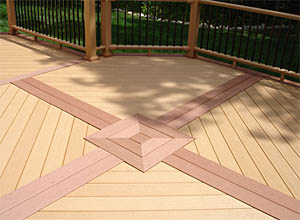
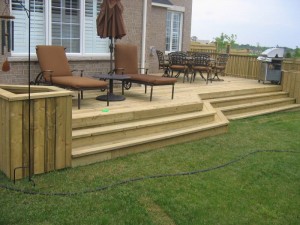
St. Albert Gazette, At Home, All Decked Out, Saturday June 14, 2014, By Lucy Haines, Staff writer, lhaines@stalbert.greatwest.ca
What to do with the mountain of cardboard boxes after a move? It can be a dilemma, especially for eco-conscious consumers, who don’t want to add to the landfill waste. St. Albert residents have an alternative with Frogbox, the Edmonton region’s only provider of re-usable plastic moving boxes. And with drop-off and pick-up service, the convenient, eco-friendly alternative to cardboard is a no-brainer for many.
“We’ve never changed how we move, and yet it’s one of the most stressful things we ever do.” said Edmonton franchise owner Darren Weber. “We chase around for cardboard boxes, and then most end up in the landfill after just two uses. If you could make the move easier, without impacting the environment , why wouldn’t you?”
The sturdy, stackable 70 litre boxes used by frogbox are used an estimated 400 times each – disinfected before each use – and are rented based on number of bedrooms and the size of the home or office. “Reuse is best, before recycle,” Weber said, estimating that the average house spends $150 (plus $30 for delivery and pickup) for frogbox rentals.
Customer, mostly residential, but also many business/office moves, can choose when, where and for how long to keep boxes before pickup at the new location. Weber said he sees frogbox revolutionizing the moving industry, and with branches across Canada and several in the U.S., it makes moving to another city that much easier – pack up in one location; get frogbox to pick up the boxes in the new city.
“We want to eliminate cardboard boxes for moving. We want people to see that we’re passionate about the product and the environment. We’re going to be a household name,” said Weber, who co-owns the local franchise with wife Carmen.
As a “green” corporate citizen, frogbox donates one per cent of annual sales to eco-friendly charities like Duck Unlimited. Even the frog represents the eco-friendly mindset – it’s an indicator species, so if frogs aren’t present in a pond, it’s not a healthy environment.
“It’s a challenging industry – there can be a lot of waste – but we’re breaking new ground,” Weber added.
Other companies are seeing the benefits too. Ted Lelacheur, president of Western Moving and Storage, said there’s a definite advantage to plastic moving boxes, especially the number of times a box can be reused.
“Fundamentally, it’s a great system. Our customers tell us they like the reusable aspect – especially office moves, where they need to get out of boxes quickly at the new location,” he said.
Chaise Kozinko, lead hand for Action Moving, said his movers like the sturdy, stackable frogboxes too, which most importantly, can be labelled and locked. “We like that – nobody can get access to what’s in the boxes,” he said.
Consumer can go online to estimate the costs for box rental for their move, at frogbox.com.


St. Albert Gazette, Lucy Haines, Special to the Gazette, Wednesday May 28, 2014, frogbox.com
Once you’ve figured out what you want your home to look like, the big question is: Should you decorate it yourself or hire a professional? Or both?
Interior decorators and designers as we know them today barely existed before the 20th century. Before that it was taken for granted that you decorated your home yourself, unless you were Marie Antoinette or somebody with a similar pedigree.
Old habits die hard. Some people still think you need to live in a palace to hire a decorator, or are fearful of the cost (whether real or perceived). For others it’s not so much a question of money, but of ceding control and having the concern that the results might not reflect their tastes. Some dive into the collaborative process without hesitation, while others have confidence in their tastes and skill and prefer to decorate their homes themselves.
Which camp do you fall into? Here are some things to think about to help you decide.
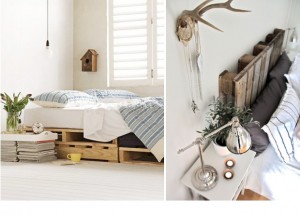
Advantages of Decorating Your Home Yourself
Obviously, decorating your home yourself means you won’t have to pay someone else to do it. The results will truly reflect your personal taste, and you’ll be able to take full credit for them. If you’ve gone through the process before and were pleased with the results, there’s no reason not to do it again.
Whether the DIY route will work for you will depend on your strengths. “If you know what you like and you know what makes you tick, you’ll love everything you choose,” says interior designer Alana Homesley of Woodland Hills, California. You can also do the project in stages, as funds allow, and you won’t face the challenge of trying to convey your likes and dislikes to a stranger.
Disadvantages of Decorating Your Home Yourself
You could mess up. And you’ll either need to live with that error for years to come or pay a large sum of money to make it go away.
“Do you have the ability to visualize? Are you a creative type? If you’re not, then you need some help,” says Homesley, “because it is expensive, and you don’t want to make any mistakes.”
The DIY route won’t necessarily save you money. Decorating can be a time-consuming proposition with a steep learning curve and a huge number of decisions that need to be made. What’s your time worth? Will that outlay of time justify the fees you’ll be saving? If you make a mistake and something has to be redone, will you forfeit your savings?
In America a large percentage of home furnishings are sold to the trade only at wholesale designer showrooms. So what you’ll see in stores is only a fraction of the merchandise that’s available. While some showrooms permit public access, you’ll still need to buy through a designer.

Advantages of Hiring an Interior Designer
Hiring an interior designer will give you access to a large selection of to-the-trade-only furnishings, fabrics and wall coverings that otherwise you’d probably never see, and the services of workrooms and tradespeople that the designer has cultivated relationships with over the years. You can potentially end up with a beautiful home tailored to your tastes and lifestyle, and furnished with pieces chosen by an expert for their beauty, quality and durability.
“If you have the budget, that’s the way you should go, because you’re going to have something custom to you,” says Homesley.
“Having someone who can affirm your decisions is really positive,” says designer Amy Luff of Viva Luxe Studios in Bristol, Virginia. “Designers can save you money. And they can save you from repaying for something.”
Disadvantages of Hiring an Interior Designer
Working with an interior designer can be costly. It’s also a very intimate process. You will be sharing a lot of details of your life with another person. You might end up working together for months — maybe even years. A designer can become a confidant. Or, if you don’t pick the right one, an adversary.
Just because someone was on a magazine cover, Luff observes, doesn’t mean he or she will be the right fit for your home. So it’s extremely important that you like and trust your designer, and most of all, communicate well with him or her. Be clear about your budget up front, with no apologies and no excuses. Don’t hire someone accustomed to $250,000 budgets and expect her to shop for you at T.J.Maxx. Conversely, don’t expect a lower-budget beginner to deliver results like Mario Buatta.
There’s a sense of accomplishment that comes with decorating your home yourself that you might not feel if you pay someone to do the work for you. A good designer will involve you in the process, however, and make you feel like you played a major role in the outcome
Working With a Pro and Doing It Yourself
If you like the idea of working with a decorator or an interior designer, but not the cost or loss of participation, there are alternative working arrangements you could consider.
1.Hire a decorator by the hour to help you plan the layout and the furniture, fabric and color selections, then execute the plan yourself. Not all designers are willing to accept small assignments like this, but some will welcome it.
2.Design the project yourself but hire a pro on an hourly basis to hold your hand through the selection process, or to offer a verdict on items you’re considering.
3. Work with a virtual designer. A growing number of designers have hung their shingles on the Internet. You send them photos or a floor plan of your home, and they provide consultations for a fee, without ever meeting you (or your home) in person.
4. If there’s a furniture store you really like, see if it offers free interior decorating services. Some stores will work with you on your project without charge, although you will need to acquire the furniture from that store. “If you really like that store’s stuff, it’s a good way to go,” says Homesley.
Houzz, Article
Fred Albert,Houzz Editorial Staff. A staff writer and editor for Houzz
On July 1st, 2014, the Alberta Real Estate Association will be implementing a change. It will now require industry professionals to enter into a written service agreement with all client relationships when trading in residential real estate.
Here is a great video for you to watch that outlines why it is important to have this agreement in place.
Did you know that the average person moves 11.4 times in his or her lifetime? So says the most recent information from the U.S.Census bureau. Various factors prompt people to move, from job opportunities to the desire to be closer to family members to wanting to live in a nicer climate.
Moving is seldom an easy task, and is often ranked among the most stressful events in a person’s life. The employee Relocation Council cities it as the third most stressful event in life, following only death and divorce. That stress is only heightened when an entire family is making the move and an adult is starting a new job simultaneously.
Despite the potential headaches involved with moving, millions of people move each year. Those moving are often married couples between the ages of 25 and 44 with on or two children between the ages of 2 and 11. To make the process go more smoothly, consider the following tips.
1. Gradually introduce the concept of moving. Moving is a decision to be discussed with the whole family, even with young children who may not fully understand the process. Kids who are involved in looking at new homes or voicing opinions about which amenities they desire in a new neighborhood will feel empowered and in control.
2. Research potential new neighborhoods carefully. Finding a new residence is not entirely about buying a home that fits the family and its needs. It also is about finding a desirable neighborhood and community. A good school district is an important factor, as is proximity to recreation, local culture and transportation. Drive around a neighborhood during different times of the day to guage how active it is. Investigating businesses in the area can also help guage the personality of a given neighborhood.
3. Work with an experienced agent. A Realtor who is familiar with a variety of communities is a great asset. A buyer’s agent will find homes and negotiate on the part of the buyer, having your best interest in mind. Because the agent will be paid a commission on a portion of the sale price, which doesn’t come out of your pocket, it is in the Realtors best interest to help you find a home you can call your own. In addition, the agent will handle many of the tasks that may be overwhelming if you were doing them on your own, such as scouring available listings, waiting for inspections or filling out pertinent paperwork. With a Realtor handling these tasks, families can remove some of the stress from the moving process.
4. Pack children’s rooms last. Young children who see favourite items disappearing into bubble wrapping and boxes may start to feel anxious. It’s not uncommon for preschoolers to act out or experience nightmares during the moving process. Maintain sense of normalcy in the home as long as possible. Begin packing nonessential items, only packing kid’s items when your moving date is right around the corner. Let children say good-bye to familiar haunts and even to their old home.
5. Plan a school orientation. Take advantage of any programs schools offer to acclimate kids to their new environment. Kids oftern leave friends behind when moving to a new home. The faster they get back to a normal routine, the better it will be for them. Schools are where children will make new friends and participate in social occasions, so tour their new schools before the school year begins, and meet with a few residents and current students to learn about special programs that may make a move less stressful for youngsters.
Relocating a family can be stressful. But involving kids in the process and anticipating an adjustment period can help families adjust more easily.
Article: Metro Creative Connection, Real Estate Weekly, April, 2014.

Work on north-east leg rolls on this summer, completed in 2016.
This summer’s work on the Anthony Henday will mean better business for St. Albert, say local leaders.
Crews are going full steam ahead this summer to build the last leg of Anthony Henday Drive. The 27 Kilometer $1.8billion stretch of road will feature nine new interchanges and two bridges when complete, and will be the biggest highway construction project in Albert history.
“This summer is going to be one of the busiest construction seasons for the project,” said Christine Way, press secretary for Alberta Transportation Minister Wayne Drysdale. Crews expect to work a collective 1.4 million hours before the end of the season.
Crew are now constructing the second half of a bridge over the North Saskatchewan River as well as an interchange at Sherwood Drive and Yellowhead Trail north-east of Sherwood Park, Way said. They also plan to finish the southbound lanes on the Yellowhead-Sherwood Park Freeway interchange this summer. Edmonton’s 18th Street will reopen, while the 167 Ave./Fort Road intersection will close permanently.
Work to hook these new bits of road to the rest of the Henday at Manning Dr. won’t happen this year, Way said. It’s on schedule to be done by 2016, though, letting drivers motor all around Edmonton more or less interrupted.
Drivers should expect to see about 17 different construction site along the northeast leg of the Henday this summer, Way said. Traffic delays, closed lanes and lower speed limits should all be expected.
This chunk of highway is the last piece of the Henday puzzle, said Ivan Mayer, president of the Riel Business Park Association and frequent driver on the Henday. “It’s going to help everyone who’s on the loop.”
While most of the St. Albert’s truck traffic comes from the south (and the U.S.) or west (and the B.C. coast), the city does get a lot of customers that want to drive in from the north-east, Mayer said. Right now, those customers don’t have a straight path to get to this city. “This will make it much easier to find us.”
A finished Henday will mean more economic development for St. Albert, said Mayor Nolan Crouse. “People are going to be able to live here and work elsewhere,” he said. “It’s bringing the region closer together.”
This leg of the Henday is scheduled to open for traffic in November 2016.
Article: Kevin Ma, St. Albert Gazette, May 3rd, 2014

Move comes amid concerns real-estate market is overheating.
Canada’s government-owned housing agency is reducing the amount of mortgage insurance it has outstanding amid concern the nation’s real-estate market may be overheating.
Canada Mortgage & Housing Corp. said Monday in its annual report it plans to have $545 billion in so-called mortgage insurance in force this year as repayments offset new policies. CMHC which insures home owners against default, said its insurance in force as of Dec. 31 fell 1.6 per cent from the year earlier to $557 billion.
The agency said it plans to insure 353,975 mortgage loans this year, up 3.0 per cent from last year.
Prime Minister Stephen Harper’s government has been reining in CMHC’s share of the mortgage insurance market to curb taxpayer liabilities in the event of a downturn. In 2012, the government gave the country’s banking regulator new powers to oversee CMHC. Finance Minister Joe Oliver pledged in March to continue lowering potential risks to taxpayers.
CMHC also guarantees mortgage-backed securities used by financial institutions to raise funding for housing loans, as well as the debt it issues, known as Canada Mortgage Bonds. CMHC will back $120 billion in mortgage-backed securities and Canada Mortgage Bonds this year, down 2.1 per cent from $122.6 billion in 2013, it said Monday. The agency will probably issue close to $40 billion in Canada Mortgage Bonds this year, in line with issuance over the “last few years”, senior Vice-President of capital markets Wojciech Zielonka said Monday.
CMHC insurance is fully backed by federal government. By law, Canadian mortgage that have less than a 20-per cent down payment must be insured.

Edmonton Journal, Business, Section C, Editor: Mark Iype, Tuesday May 6, 2014
Congratulations! Top Producers for April 2014!
Hip Hip HOORAY! Way to go Team!
Congratulations to our top 4 producers for the month of April!!!! 1. Mike Kinsella 2. Rainy Noyes 3. Don Cholak 4. David Centis
Keep up the great work!

If you think this might affect you, maybe its the right time to make a move.
Tax Season
CMHC to limit mortgage insurance product offerings
Effective May 30, CMHC will stop offering mortgage insurance on second homes
Canada Mortgage and Housing Corporation will no longer offer mortgage insurance on second homes, the crown corporation said on Friday.
It will also discontinue selling mortgage insurance to self-employed people without third-party income validation.
The new limitations mean borrowers will also no longer be able to act as co-borrowers on other applications.
These changes, which will take effect on May 30, are part of the ongoing review of the mortgage loan insurance business.
CMHC said self-employed Canadians can still qualify for insured financing with a validation of their income using traditional methods.
As well, the two products will still be available to those who submit requests prior to May 30, regardless of the closing date of the home purchase.
CMHC said these two products account for less than three per cent of its insured business volumes in units.
“Given the limited use of these products, their discontinuation is not expected to have a material impact on the housing market,” CMHC said in its release.
The changes come as Canadian home buyers face an increase in mortgage insurance premiums.
In February, CMHC announced it would hike premiums for default insurance by an average of 15 per cent effective May 1.
The increase would hit buyers who have a downpayment of less than 20 per cent.
CBC News/Business Posted: Apr 26, 2014 12:23 AM ET Last Updated: Apr 26, 2014 12:23 AM ET
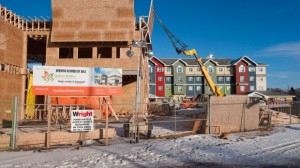
Construction crews build housing and community centres in Saskatoon, Sask., on Feb. 2, 2012. CMHC said Friday it will stop offering mortgage insurance on second homes as well as to self-employed people without third-party income validation. (Liam Richards/The Canadian Press)
Effective May 1st, 2014 the CMHC Insured Premiums are going up.
Loan-to-Value Ratio Standard Premium(Current) Standard Premium ( May 1st, 2014)
Up to and including 85% 1.75% 1.80%
Up to and including 90% 2.00% 2.40%
Up to and including 95% 2.75% 3.15%

‘Tis the season for making changes in and around the home. The arrival of warmer weather renews home owners’ vigor for various home improvement projects, and many have grand plans for interior and exterior renovations as they prep their living spaces for comfort, beauty and entertaining opportunities. While there are many worthy projects to pursue, adding outdoor lighting to a home can help increase its value and make the home safer and more attractive in the evening hours.
According to the American Lighting Association, with a few updates to outside lighting, families can make even better use of their homes at night. Adding outdoor lighting is easier and less expensive than many home owners may know, allowing them to transform an existing patio, deck or pool area into an enjoyable night-time retreat. Pool parties, dinner on the patio or barbecues with neighbours become even more memorable when outdoor lighting is added or improved. But home owners who want to install or upgrade their outdoor lighting should consider the following tips, courtesy of ALA.
– Improve navigation: Lighting is typically layered into a room or outdoor space in three ways: overhead, tasks and ambient. Even outdoors, where there are not typical boundaries and borders, those three layers are necessary. Outdoor overhead lighting should improve visibility on steps, paths and walking surfaces, especially where there’s a bend or an intersection . Task lighting can be used around cooking or gardening areas. Ambient light will cast a comforting glow around any outdoor space.
-Enhance security: To improve visibility and security, combine a motion detector with a sconce to illuminate dark corners or entryways. Be sure to aim lights away from the door to improve visibility. Lanterns on either side of the door can give a home a warm, welcome appearance and improve safety of entryways.
-Create outdoor rooms: Outdoor lighting at the borders of a space is a great way to create barriers, both vertically and horizontally. Lights in a tree create something akin to a chandelier hung in the middle of the sky, and even accent lights in the general area of the edge of a patio, deck or porch will shine across the space and provide enough of a comfort level for people to understand where things are.
-Reduce glare: Outdoor lighting that casts a glare can be blinding, as can light that’s too bright. Lighting along paths should be cast downward, with fixtures that are hooded. A variety of lighting options will create layers, allowing you to add or subtract as necessary. Exterior safe dimmers also can provide flexible control over the level of light, as can movable fixtures added to a patio or porch.
–Add decorative elements: Just as arbors, pergolas, patios and other outdoor elements help to enhance the style of an outdoor space, so, too, can lighting contribute to a well-designed landscape. Lighting should play up decorative features of a yard and add the ambiance that home owners desire. Step lights make passage sage while also highlighting molding or trim details. An outdoor chandelier can make for a wonderful accent during, dinnertime on the deck or under a pergola. Patio lights provide atmosphere as well as illumination for cooking outside.
-Enhance views from inside: Outdoor lighting can make the view from inside pleasant and enjoyable. Use a variety of lights, including spotlights on trees, lights dotted along pathways and accent lights on unique landscape features to create an idyllic landscape visible from inside the home.
Outdoor lighting enhances functionality of yards and landscape while making such areas safer for home owners and their guests once the sun has gone down.



This spring set to sizzle in local Real Estate market!
Early indications show that the St. Albert housing market is in for a banner spring selling season. Spring is traditionally the busiest time of the year for house and condominium sales. Realtors say the present limited inventory, combined with the usual influx of spring home-buyers, has already set up scenarios of multiple offers and homes selling at or above asking price within days, rather than weeks.
Scott Storry, a St. Albert Realtor with Royal LePage, said the city’s range of housing from near million dollar executive homes to affordable condos under $200,000, attract a wide variety of buyers and both can sell quickly in a hot market, as long as they are priced right.
“In my view, listings that are priced to sell can get at or over full list price. And it’s a big deal that St. Albert was just names a top City in Canada, it’s safe and beautiful – so people want to move here. Interested buyers and an attractive product make for a hot market,” said Storry.
“But homeowners still need a plan to get a quick sale, simple things they can do to show the home at its best. Remember, you only have one chance to impress.”
The median home sale price in St. Albert was $441,000 in March with 79 sales. In the entire Edmonton metro area, sales of all types of residential properties were up 5.8 percent in the first quarter, compared to the same period in 2013. Realtors Association of Edmonton president Greg Steele said first quarter data shows high demand for housing and good consumer confidence throughout the capital region.
For homeowners planning to sell in this buoyant spring market, experts offer a few common sense tips to keep in mind before the “For Sale” sign goes up.
“Make sure your home is sparkling clean. De-clutter, take down most personal pictures and mementos, and think about refreshing up the house by painting with neutral colors,” said Sheryol Shera, local Realtor and owner of Shera & Co., which provides interior redesign and staging for home seller in St. Albert and area.
“And remember the outside of the house too – curb appeal – clean the front door, sweep away leaves and cobwebs. Homebuyers take 60 seconds to make a decision about the property, so the house had better be clean.”
AS soon as a sign goes up on the lawn, homeowners shouldn’t think of the house as their any more – that mindset can help people take the emotion out of the home-selling experience, she said.
“We come in with an objective eye and show homeowners that the house needs de-cluttering or a fresh coat of paint.” Shera added, even recommending a favourite paint colour to customers: a neutral blue-grey paint from Benjamin Moore called Perspective that she said won’t offend potential buyers.”
Storry agrees that paint is an easy,low cost-fix when preparing to sell – providing well over a 100 percent return on investment – along with minor changes like cleaning carpets, replacing missing baseboards and patching holes in walls.
“If your home is tidy, shows well and is priced right, it’s likely to sell quickly in this market,” he said.
St. Albert Gazette, Saturday April 12, 2014, At Home, By Lucy Haines.

The cost to buy a new home in Edmonton is higher than ever, say industry officials.
The Realtors Association of Edmonton is reporting the average sales price for a home in Edmonton has risen to $432,000 – $6,000 more than the previous high set in May 2007.
To compare, the average family home was selling for $386,000 in 2011.
Association president Greg Steele says the inflated price tags aren’t slowing the city’s intense real estate market, however. House sales are up nearly six per cent this year already.
“April is the beginning of a busy time in the real estate market when those wanting to buy and those wishing to sell real estate are most active throughout the year,” he said. “We expect those sales to increase month to month as we approach the second quarter.”
Competitive market
Steele said first time home buyers are dealing with a highly competitive market with low availability.
“First time buyers are finding their options for lower-priced, single-family property are pretty limited and we are seeing increased competition when those homes come on the market.”
Bidding wars – particularly over “lower-price homes” and those in desirable neighbourhoods in Edmonton’s southwest and west – are becoming an increasingly common occurrence.
According to the Realtors Association of Edmonton, the average family home is remaining on the market for 44 days, down from 51 in March of last year.
Condo sales are also on rise, increasing by 11 per cent in the first three months of 2014 – a number which Steele calls “staggering” – especially since the overall number of available condominiums has actually gone down.
“This year over year increase is an indicator of the high demand for housing in this market … prices will follow the demand,” said Steele.
The rapidly-moving market does have some perks if you are hoping to sell in a hurry, however.
Ike Glick recently put his home on the market and was pleasantly surprised to find a buyer within a week.
“We were pleased to sell it but … [given the current market] we figure probably sold it sooner than we should have.”
Despite the rising costs and competition, real estate professionals say this is not merely a bubble market – but is instead indicate of a genuine real estate boom.
The inventory of available homes in Edmonton is currently sitting at 6.9 per cent.
Source: Edmonton Real Estate Board
http://www.cbc.ca/news/canada/edmonton/average-house-costs-in-edmonton-reach-record-high-1.2595834

A round of applause goes out to my fellow colleagues! The Top Producers for March 2014 are….Mike Kinsella, Don Cholak, Sonia MacKenzie and Scott Storry. Keep up the great work guys!

Improving economy could signal time to move from variable rate.
Toronto- Longer term fixed mortgage rates may soon be a better deal than variable rates for home buyers, says a new report by BMO Capital Markets.
BMO chief economist Douglas Porter and senior economist Benjamin Reitzes say that historically, choosing a variable mortgage rate has been more “cost-effective” than locking in on a five-year fixed rate, but this may no longer be the case as signs of an improving economy continue.
It has been long anticipated that both the Bank of Canada and the U.S. Federal Reserve will move to hike interest rates in 2015.
“True, it may have seemed that markets and economists have played the role of the Little Boy Who Cried Wolf on higher interest rates in recent years,” says the report release Thursday.
But there are emerging signs that the tide is finally turning for rates, especially with the U.S. economy poised to accelerate. The bond market has sent out loud warning signals over the past year that the era of low-interest rates may finally be drawing to a close.”
Currently, a five-year fixed mortgage rate from on of the big Canadian banks hovers above three per cent, with variable rates ranging below that.
As bond yields rise they will put pressure on borrowing costs and long-term mortgages, Porter and Reitzes say. “So, even if variable rates take some time to climb, we may not see such low fixed rates again any time soon.” their report says.
Most affected by potential hikes, they said, are those who are already stretched too thinly in the housing marking, so locking in at a higher rate may help this group weather any drastic increases.
“For those who don’t have much financial flexibility and would run into difficulty form a pronounced upswing in interest rates (typically first-time homebuyers), any potential extra cost for peace of mind now appears to be a price well worth paying,” the report says.
Earlier this week, the Teranet National Bank national composite price index found that home prices are rising steadily.
In February, Canadian home prices rose 0.3 per cent.
The index found that prices were up in all five markets surveyed in Western Canada and were down in all eastern markets except Montreal.
– Edmonton Journal – Business B3-Friday March 14, 2014 – The Canadian Press
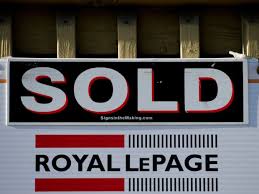
Wall beds come out of hiding!
Comfortable space savers are turning rooms into multitaskers.
“The clients came to interior designer Laura Casey with a space dilemma: They did not want to give up the guest room in their suburban home, yet they needed a place for their child to play.
Casey came up with a solution often used in small urban apartment: a Murphy Bed. It takes up less space than a sofa sleeper or futon and – unlike many of those – uses a standard mattress, so guests including elderly grandparents, have a more comfortable stay.
“The did not want to compromise the quality of the mattress,” said Casey, owner of Laura Casey Interiors in Charlotte N.C.
The Murphy bed – which tucks into cabinetry when not in use – is enjoying new popularity as a stylish space-saver in many kinds of homes, not just studio apartments.
“It is an interesting trend,” said Chris Fahy, vice president of The Bedder Way Co. in Indianapolis, which makes Murphy beds ans has seen sales rise in recent years. He says many customers are Baby Boomers, empty nesters, and other homeowners who want to turn a bedroom into a hobby room or exercise room but still need a place for grown children, grand children or other guests to sleep. Fahy’s Murphy beds range in price from $1300-$3100. California Closets, which also makes custom wall beds, has seen the same upward trend, said Ginny Snook Scott, vice president for sale and marketing.
– Edmonton Journal – Homes – Section H – Helen Metella – Saturday March 8, 2014
Were you looking for a space-saving tip, or a multitasking room option. Why not look into a Murphy bed?
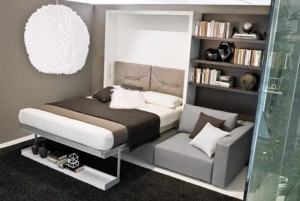
It’s all the buzz….St. Albert has topped MoneySense’s annual Best Places to live ranking.
“Who says size matters? If you’re looking for the best place in Canada to live, perhaps it’s time to think small. Really small. It’s easy to think residing in a modest-sized town means giving up access to all the services and amenities you need or desire, but that doesn’t have to be the case. Satellite communities around major centres are evolving to deliver small-town flare with big-city conveniences. In that way, many of these communities aren’t just great places to live: they’re Canada’s best-kept secrets. Take St. Albert, a community of just 64,000 on the edge of Edmonton that few Canadians have likely ever heard of. They have now, because St. Albert tops MoneySense’s annual Best Places to Live ranking.
The surge of the west is a prominent trend in our ranking. Nearly half the top 20 cities on our list are west of Winnipeg. It’s no fluke. Consider what’s happening in cities like Calgary, which comes in second overall (and was last year’s number one). In addition to offering plenty of opportunities to land high-paying jobs, the city is rapidly expanding its transit system and growing its cultural scene. The tilt westward doesn’t come without some casualties in the east. Orillia and Owen Sound in Ontario are two prime examples. Growth in these cities is stagnant and the job outlook is dim compared to the rest of the country.”
In case you were wondering how they go about reaching these rankings here are some facts from MoneySense:
“In total, we consider 34 different factors before arriving at our winner. To do this, we collect reams of hard data on each city from Environics Analytics and other partners. Then we tease out factors that make a community a truly great place, thereby creating a level playing field. The result is a completely unbiased look at the biggest 201 cities in Canada. ”
“So exactly how does St. Albert, a small city on the fringe of Edmonton, beat out every other city in Canada? Take your pick. Unemployment sits at just above 4%, incomes are among the highest in the country, crime rates are steadily falling, and while its winters can be skin-splittingly cold (averaging 28 days a year with a minimum temperature below -20˚C), there’s plenty of sun all year round.
“The numbers, though, don’t begin to describe the appeal St. Albert holds, especially for young families. At a time when some cities seem to be going to war with kids looking to play a little shinny on the street, St. Albert stands out as a place where cars don’t always come first. Street hockey is encouraged and if you want to close the street for a neighbourhood party, go right ahead. Give the city 10 days’ notice and they’ll barricade the street—the city’s Neighbourhood Watch and Citizen’s Patrol teams will even bring the food.”
So there you have it! St. Albert ranks 1st in the Best Places to Live in Canada.
MoneySense Magazine, by Mark Brown ,March 12th, 2014, From the April 2014 issue of the magazine

From the early 1990s to the beginning of this century, “bigger is better: certainly was the mantra of the home-building industry. But according to new data, home buyers are seeking less space today but more in green amenities.
Research by the Canadian Home Builders Association has found that many people now desire smaller homes with multi-purpose rooms and energy-saving features. Plus, a survey of International Furnishing and Design Association members forecasts more emphasis will be placed on smaller, more eco-friendly homes. Family rooms will grow larger, as will kitchens. Other rooms in the home will disappear, including the living room.
Many homeowners and potential home buyers realize that with girth comes a cost. In today’s fragile economy, the ability to cash in on the dream of homeownership may come at the compromise of a smaller, better planned home. According to Tim Bailey, the manager of Avid Canada, a research and consulting firm for the building industry, “While many consumers are willing to forgo space, they are not equating this with having to forfeit functionality. Design creativity is requisite to adapt to this changing preference.” Here are some thing you will and will not find in newer homes moving forward.
– The dining room is becoming extinct, with larger eat-in-kitchen/entertaining spaces the norm. The kitchen will be the main room of the home and be renamed the “Kitchen lounge”.
– Seperate rooms are evolving into spaces that serve many different purposes.
– Although the sizes of bathrooms may be scaled back, the amenities will not. Spa-style bathrooms with luxurious products, high-tech features and televisions will be on the rise.
– The master bedroom suite may not shrink in size, but it could be combined to form a home office and exercise space.
– Expect to see more high-tech offerings, such as voice-or motion activation devices in the home. Lighting, entertainment gear, heating/cooling systems, and even blinds could be hooked up to a master control system.
-Thanks to an increasing number of people working from home, the presence of a dedicated home office is a given in newer homes. Nearly 40 per cent of industry forecasters say that they expect one in every home.
– Home storage solutions will also be a vital component of new homes. Builders will create clever solutions for mixing storage into more compact spaces.
– With aging baby boomers comprising a larger segment of home buyers, expect to see more one level homes, or at least homes where there is a master suite and the majority of the living space on the first level.
Smaller, more efficient homes require less in terms of heating and cooling energy. They need less furniture, and new materials made from sustainable products help further fuel green initiatives in the building industry. Energy efficient homes are a main priority for buyers. Although the homes may be smaller, they will not be miniscule.
-Metro Creative Services, St. Albert Gazette – Article

This is the Secondary Sidebar Widget Area. You can add content to this area by visiting your Widgets Panel and adding new widgets to this area.
Direct:
780.718.8400
Office:
780.458.8300
Fax: 780.458.6619
Email: don@doncholak.com
RE/MAX PROFESSIONALS
12 Hebert Road
St. Albert, AB T8N 5T8

Trademarks are owned or controlled by The Canadian Real Estate Association (CREA) and identify real estate professionals who are members of CREA (REALTOR®) and/or the quality of services they provide (MLS®).
Copyright © 2024 · Don Cholak Realty · Website by Real Agent Connect ·